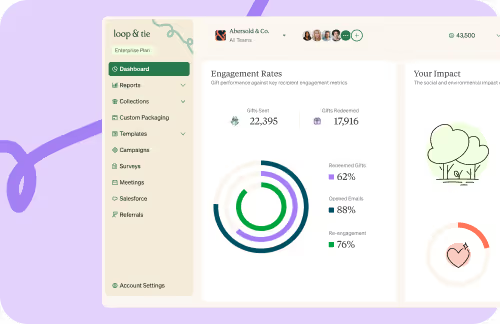Creating a Culture of Gratitude in the Workplace
In this blog post, we will explore the importance of fostering a culture of gratitude in the workplace and how it can positively impact employee morale and productivity.
The Benefits of Gratitude in the Workplace
Neuroscientists and psychologists have shown increased explorations into the benefits of the practices of gratitude. Their studies have revealed that regular practices of displaying gratitude have a measurable impact on five core ares of our neurological and psychological well-being. Displaying consistent acts of gratitude in our daily lives improves our ability to form new neural connections, otherwise known as neuroplasticity.
Underpinning the improvements of our neuronetwork are five key areas to which gratitude makes a significant impact on our neuroplasticity.
Improving neurotransmitter production
Regular expressions of gratitude has been linked to increased productions of dopamine and serotonin neurotransmitters - commonly referred to as the “feel good” chemicals - in our brain. These neurotransmitters are responsible for improving the feeling of happiness and satisfaction. Consistent exposure to these neurotransmitters make measurable improvements to our overall emotional wellbeing.
Reducing the production of cortisol (aka, the “stress hormone”)
Prolonged exposure to cortisol is well understood to cause negative side effects such as weight gain, suppressed immune system, and in some cases an increase in the risk of cardiovascular events. The positive emotions associated with gratitude have been shown to help counteract the feelings of anxiety and stress which in turn counteracts the production of cortisol in our system.
Boosting brain function in the prefrontal cortex
Researchers exploring the lasting effects of gratitude have found that routine and long-standing practices of gratitude make improvements in the sensitivity in our medial prefrontal cortex. The prefrontal cortex is the area of the brain commonly associated with learning and decision making. Their studies suggested that the longer someone incorporates practices of gratitude in their day-to-day, the greater one’s attentiveness and intentionality becomes at the practice of being grateful. The more attentive and intentional someone becomes, the more they reap the benefits of neurotransmitter production & cortisol counteraction both of which improve our overall physiological well-being.
Reinforcement of neural connectivity
MRI and functional connectivity analysis conducted on gratitude practitioners revealed that gratitude shows signs of improvements to our neural pathways. The more frequently we practice acts of gratitude, the stronger our neural connectivity becomes with feeling of happiness more often and at greater depths.
With research measuring the positive impact that expressing gratitude has to improve our mental health, reduce stress levels, and promote a sense of connectedness to those around us, employers can create a positive work environment where individuals feel supported, acknowledged, and motivated to perform their best. Companies built around a culture of gratitude in the workplace tend to see increased employee engagement and overall satisfaction which results in lower voluntary turnover rates as high as 31% compared to companies without recognition programs to facilitate gratitude.
Implementing Gratitude Practices and Programs
Implementing gratitude practices in the workplace needs to be an intentional and organic practice, one that aligns with your company’s values and beliefs. Most organizations starting from scratch with programs get the best ideas for where to focus by surveying their team. Based on your team’s feedback on how, when, and/or why they’d like to receive appreciation, you can start building and implementing programs that foster expressions of appreciation from peer-to-peer..
It cannot be understated how important your people-management team is in the process of building and implementing your programs. Consider them the ambassadors of your program, leading by example within their teams and positively reinforcing practices of gratitude they witness and/or experience from the members of their team. The goal is for your organization to begin establishing cultural norms of gratitude infused at the core of one-on-one interactions, team meetings, or in group communication channels such as Slack or Teams.
As your practices grow, your company might look for opportunities for your team to expand their gratitude practices through formal employee recognition programs. Employee recognition programs are designed to reward and recognize outstanding performance or dedication from members of your team. While not required, these programs can include incentives such as bonuses, gifts, time off, or awards to acknowledge an individual’s incredible contributions.
At their core, employee recognition programs are designed to foster a culture of gratitude. As your workforce changes, how your team prefers to show or be shown gratitude might also change. Agility and receptibility to iterations to your programs is the best way to support your team.
Fostering a Supportive Environment
Creating a supportive environment within your organization is crucial for cultivating a culture of gratitude in the workplace. With can promote open communication and active listening, ensuring that employees feel comfortable expressing their thoughts, concerns, and appreciation. Regular team-building activities and social events can also contribute to building a supportive and inclusive work environment.
Furthermore, leaders and managers play a key role in fostering a supportive environment. They should lead by example and actively demonstrate gratitude towards their team members. By showing appreciation for their employees' hard work, providing constructive feedback, and offering support when needed, leaders can create a positive work culture that encourages gratitude.
Measuring the Impact of Gratitude
Measuring the impact of gratitude practices in the workplace is crucial to understand their effectiveness and make necessary adjustments. Organizations can use various methods to measure the impact, such as conducting employee surveys to gauge satisfaction, engagement, and perceived levels of gratitude within the workplace.
Additionally, organizations can track key performance indicators (KPIs) related to productivity, employee turnover, and customer satisfaction. By comparing these metrics before and after implementing gratitude practices, organizations can assess the positive impact on employee morale and productivity.
Regular feedback sessions and open dialogues with employees can also provide valuable insights into the effectiveness of gratitude practices and areas for improvement. By continuously evaluating and refining gratitude initiatives, organizations can ensure a sustainable culture of gratitude in the workplace.
Companies prioritizing and fostering a culture of gratitude are building an emotionally intelligent and empathetic workforce. Gratitude programs will organically facilitate compassion, appreciation, and forgiveness, all characteristics of top performing employees and organizations.
Read our 2024
Impact Report










.webp)















